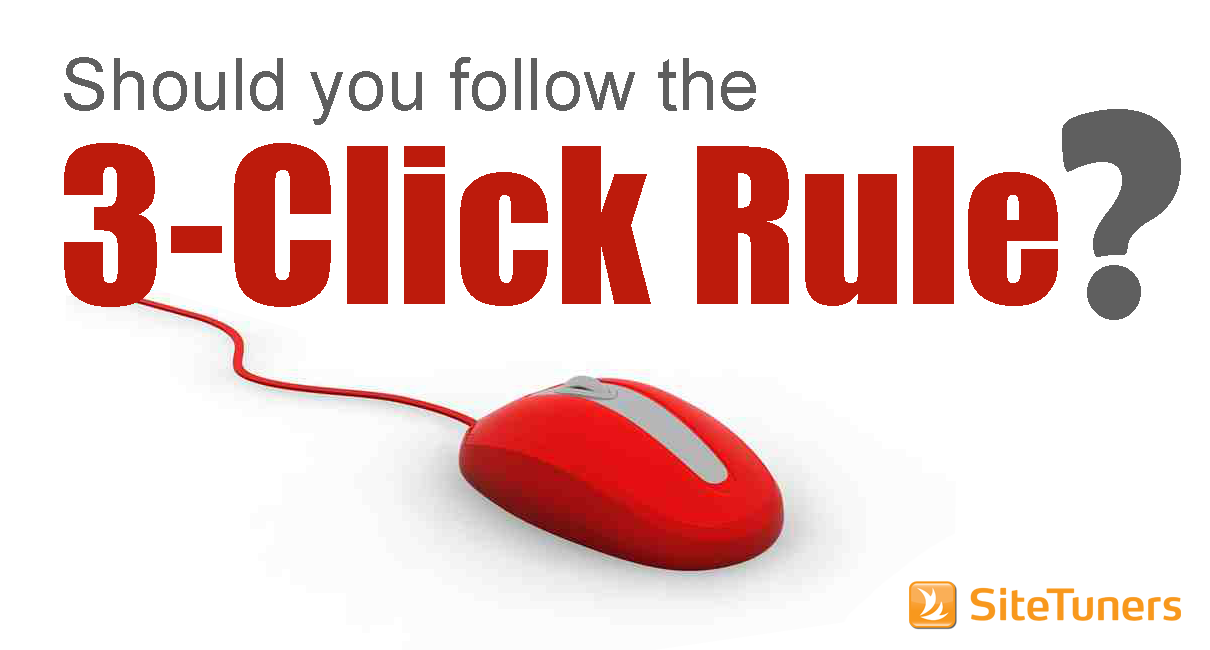 If you’ve been working on online marketing for a while, you have probably heard of the three-click rule. In case you haven’t, it’s primarily based on the work of Jeffrey Zeldman, who theorized that the tolerance web users have for navigation is three clicks to get to what they need – regardless of where they landed on your site. The theory goes something like this:
If you’ve been working on online marketing for a while, you have probably heard of the three-click rule. In case you haven’t, it’s primarily based on the work of Jeffrey Zeldman, who theorized that the tolerance web users have for navigation is three clicks to get to what they need – regardless of where they landed on your site. The theory goes something like this:
- Web users generally have the patience of a lit match (true)
- They are in need of fast gratification (true)
- You have a short amount of time to prove to the user that he or she is in the right place (true)
- If they can’t find what they’re looking for quickly, they will head to another site (true)
- So you need to provide the information in three clicks (wait, what?)
Don’t get us wrong – you need to get your users what they need quickly. You need to ensure that with every click, they feel closer to what they need, and that they’re confident they can find what to click on next, even on autopilot.
But you do not have an arbitrary limit of three clicks – it doesn’t really matter all that much how many clicks they take, as long as they are “easy clicks.”
Interaction Cost
To understand how “easy” it is for a user to get somewhere, you might need a model like interaction cost. To use Nielsen Norman Group’s definition, it is the sum of efforts, both mental and physical, that the users must deploy in a site to reach their goals.
That includes scanning and reading, scrolling, clicking, waiting for pages to load, comprehending the page, switching tasks, remembering things – just about anything between the user and what he or she needs.
So, more clicks would mean more “physical” cost. That’s generally bad – but not as bad as adding “mental” cost.
Now think of what sites often do to reduce the number of clicks to get to a page. This includes things like using rotating banners for featured products, increasing the number of navigation elements, flooding the page with links, and any of a number of things that increase the amount of comprehension power required for a page.
This is called adding to the “cognitive load.” A high cognitive load means that even though you’ve reduced the number of steps, you’ve still increased the total interaction cost, which is bad form for usability.
Why it’s bad goes back to the way people hunt for information.
Information Foraging
One of the most influential theories in gathering information on the web, or hunting for information in general, is Information Foraging, by Peter Pirolli and Stuart Card.
The paper’s worth a Google search, but the important concept for clicks is information scent. In summary, just as animals are encouraged when the smell of fruit becomes stronger, people are encouraged to click on links as long as it “smells” like they are on the right path.
So regardless of the three clicks Zeldman theorizes is the limit of user attention, it’s not actually the number of clicks that matter; it’s about how easy those clicks are to make.
Easy clicks for the user are by no means easy to create on the part of the site owner. They take a lot of thought to create – but it starts with avoiding what Daniel Kahneman in a previous post calls “system 2.”
Avoiding “System 2”
Think about most of your day. You brush your teeth, you take a bath, you get dressed, and you can do all those things pretty much on autopilot. Let’s call that system 1 – minimal thought required.
Now let’s suppose that some time during your day, you needed to, for whatever reason, divide 391 by 17. Observe yourself – some other gear will kick in. At some point, you’ll get 23. But not before you actively thought it through – you’ve left autopilot, and we’ll call that kind of thinking “system 2.”
On the web, system 2 is death. That’s the point where most users would rather switch to another site than think through whatever mental hoops you’ve put up between them and what they need.
It has nothing to do with the number of clicks. It’s usually rooted in one of the following:
- Trying to present everything in one go
- Presenting navigation elements without clear distinctions
- Failing to follow web conventions
- Not thinking through options presented
- Failing to reduce the number of elements on a page
Don’t fall for this trap – stop counting how many clicks it would take a user to get to what they need, and start making those clicks easier for your users.
